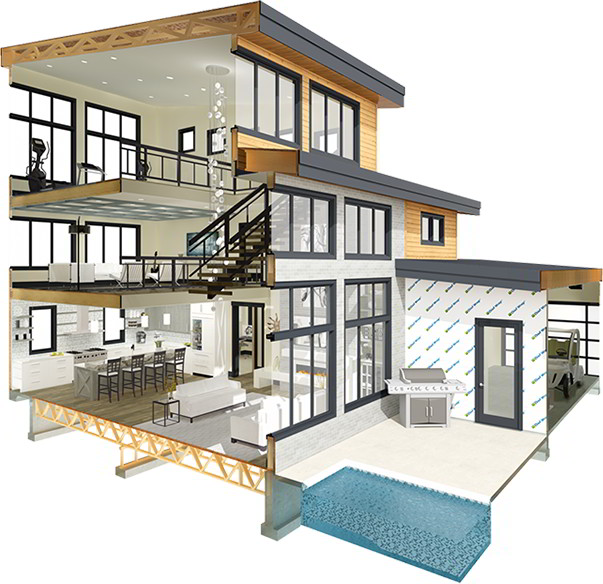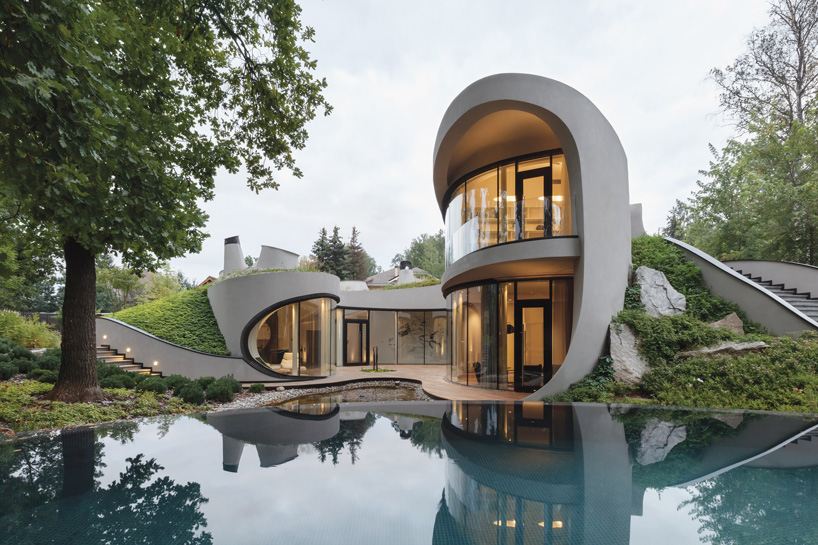Transforming Spaces: The Vision of CDA Architects for Modern Living
Recognizing the Collaborative Process In Between Designers and Engineers in Modern Building Projects
The collective process between architects and engineers is crucial in modern-day construction jobs, as it integrates layout intent with engineering usefulness. This partnership not just influences the aesthetic and useful facets of a task yet additionally plays a crucial function in dealing with sustainability obstacles. By employing efficient interaction methods and leveraging advanced modern technologies, such as Structure Details Modeling (BIM), teams can work more cohesively. The complexities of this cooperation often present special obstacles that can prevent progression. Checking out these characteristics exposes insights that might substantially impact job results and total market criteria. cda architects.
The Significance of Collaboration
The collaborative harmony between architects and engineers is important for the effective awareness of any construction task. This partnership combines distinct experience and viewpoints, making it possible for the combination of ingenious design with sensible design services. By functioning with each other, designers and engineers can ensure that a task not just satisfies aesthetic and functional needs however additionally complies with safety and security, sustainability, and monetary constraints.
Cooperation promotes a common vision, assisting in the positioning of objectives and assumptions from the outset. This positioning is crucial in addressing potential obstacles and mitigating threats that could develop during the job lifecycle. In addition, a collective approach allows for the reliable allocation of resources, optimizing both time and price.
The importance of partnership reaches the repetitive process of style and construction, where comments from designers can notify building decisions, leading to more practical and lasting styles. Alternatively, architects can motivate engineers to think creatively regarding exactly how to attain architectural stability without endangering creative intent. Inevitably, the collective connection between engineers and engineers is not simply useful; it is basic to the production of top notch, practical, and cutting-edge constructed atmospheres that satisfy the requirements of society.
Communication Methods and Devices
Reliable communication techniques and tools are important for cultivating cooperation in between architects and designers throughout the job lifecycle. Establishing clear channels of interaction is important to make certain that all team participants are lined up with project objectives, timelines, and responsibilities. Regular conferences, both in-person and virtual, provide opportunities for stakeholders to talk about progress, address problems, and make notified decisions.

Furthermore, adopting collaborative interaction tools, such as Slack or Microsoft Teams, enables immediate messaging, documents sharing, and ongoing discussions, promoting a much more active feedback to emerging concerns. Document management systems additionally play a critical function in arranging project documents, ensuring that all staff member have accessibility to the latest info.
Shared Goals and Task Vision
A merged job vision works as the structure for effective cooperation in between architects and engineers (cda architects). This common vision not check these guys out only lines up the initiatives of both events yet also establishes a typical structure for decision-making throughout the project's lifecycle. By articulating clear goals, stakeholders can efficiently browse the complexities of contemporary construction tasks, guaranteeing that both visual and useful requirements are met
Establishing shared objectives entails open discussion and a comprehensive understanding of each discipline's payments. Designers commonly concentrate on design intent, spatial partnerships, and individual experience, while designers stress structural stability, systems performance, and compliance with policies. When these point of views are straightened, the result is a cohesive job that follows both creative desires and technical usefulness.
In addition, a well-defined project vision fosters liability among team participants, motivating each individual to take ownership of their duty in attaining the preferred end result. Normal check-ins and collaborative workshops can better reinforce this dedication, allowing for modifications to be made as see here the project evolves. Inevitably, a shared vision not only improves synergy yet additionally boosts the high quality of the final deliverable, causing successful job conclusion.
The Duty of Modern Technology
Leveraging technology has actually ended up being vital in improving partnership between designers and engineers. Building Information Modeling (BIM) stands out as an essential innovation, permitting both designers and designers to develop detailed 3D designs that encapsulate style intent and structural integrity.
In addition, cloud-based platforms enable smooth cooperation, enabling job stakeholders to gain access to and update job information from anywhere. This cultivates a culture of transparency and accountability, as modifications can be tracked and reviewed in real-time. Furthermore, mobile applications more enhance communication, supplying on-site teams with instant accessibility to project requirements and updates.
Arising modern technologies such as expert system and maker discovering are also beginning to contribute in predictive evaluation, assisting teams identify possible concerns prior to they develop. Ultimately, the role of innovation in architecture-engineering partnership not only improves operations efficiencies however likewise improves advancement, leading to more successful project results. By embracing these technological advancements, designers and designers can make sure a more natural and efficient collective process throughout the construction lifecycle.
Case Researches in Successful Partnerships
Many case studies highlight the extensive effect of effective collaborations in between designers and designers on job outcomes. One significant example is the cooperation on the High Line in New York City City, where landscape designers, engineers, and urban coordinators interacted to change a deserted rail line right into a dynamic public park. This multidisciplinary approach not only boosted the visual high quality but likewise made sure structural safety and ecological sustainability.

The Burj Khalifa in Dubai additionally demonstrates the significance of collaborative efforts - cda architects. The combination of architecture and engineering expertise allowed the project team to achieve extraordinary elevations while sticking to security regulations and aesthetic vision
These instances emphasize the value of interaction, count on, and shared objectives. In today's intricate building and construction setting, such partnerships are vital to navigating obstacles and providing jobs that fulfill both functional and visionary goals.
Final Thought
In final thought, the cooperation between designers and engineers is crucial for the success of modern-day building projects. Effective interaction methods, a shared task vision, and the integration of innovative modern technologies are critical parts that promote this collaboration.